Winter in Mallorca
Mallorca has succeeded in establishing itself as a year-round destination and this is opening up international interest in the unspoilt north-east of the island, finds Arabella Youens.
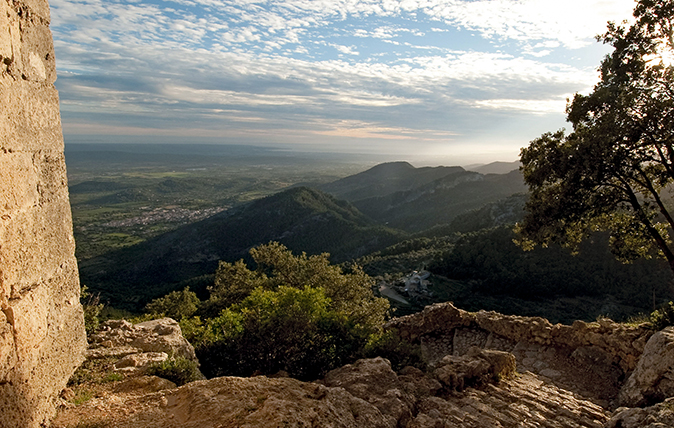

According to the local tourist board, keen to promote the island’s charms beyond the summer months, Mallorca enjoys 300 days of sunshine a year. George Sand, who spent a winter in the hill town of Valldemossa with Frederic Chopin in 1838 and wrote disparagingly of the weather, would disagree, but residents of the capital, Palma, report that the latest Christmas Day was so warm that they ate lunch on their terraces overlooking the glittering bay.
The mild climate certainly draws sport enthusiasts from across the world, ensuring the island remains vibrant and interesting throughout winter—a time when many other Mediterranean islands effectively shut down. The Sky cycling team has its winter training camp in Alcúdia, but Lycra-clad crews of all shapes, sizes and ages can be spotted across Mallorca from October to spring.
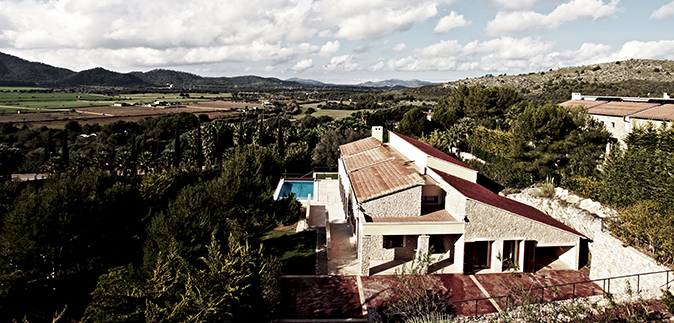
Other draws are the walks up in the mountains and along the coastline— in particular, the 84-mile Rutas de Pedra en sec, which follows the dry-stone walls—plus 23 golf courses, 40 marinas in operation, and wind-, kite- and normal surfing around the north coast. Many of Mallorca’s excellent restaurants stay open in winter to cater to this sporty trade.
Another proof of the island’s year-round appeal is the launch of the new Park Hyatt Mallorca resort. Not only has the hotel group chosen to keep this—its first venture in Europe— open throughout the year, but its location in the Canyamel valley is an interesting choice.
Of the many crossroads you find when you leave Palma’s slick international airport, the one perhaps least travelled heads north-east, towards the medieval market town of Artà and the coastline beyond. Until six or seven years ago, the journey to get there was arduous, at least by Mallorcan standards: a single-track road on which you could frequently be further impeded by the diesel fumes of an ageing John Deere tractor (the island was first and foremost a farming community before its coastline was developed for tourism in the 1960s). Since then, the infrastructure has much improved, but, nonetheless, relatively few people visit this rather charming and unspoilt end of the island.
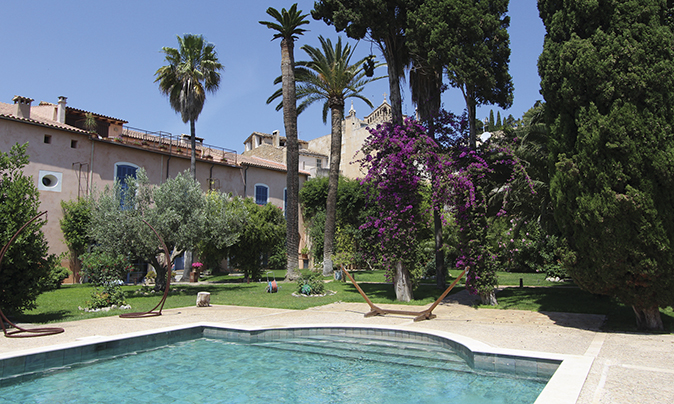
On June 1 this year, the hotel welcomed its first guests. The €140 million investment lies about as far as you can get from the swish resorts in the south of the island, such as the Philippe Starck-designed superyacht marina at Puerto Adriano and its contemporaries Puerto Andratx and Puerto Portals. ‘This area isn’t about glamour and glitz, but it’s also a long way from the package tourists of Magaluf and Arenal,’ says Reiner Fischer of Engel & Völkers north East, who has lived in the area for 14 years (00 34 971 82 93 39; www.engelvoelkers.com). ‘This is about “the other Mallorca”. It’s about being off the map or off the grid.’
Designed (with mixed success) to look like a traditional Spanish village, with terracotta roof tiles on stone houses grouped around a small square, the hotel is set within the 61-acre cap Vermell estate, which includes a development of new villas (of which 12 are already built) and a country club. The outlook from both the hotel rooms and villas is across the valley—a patchwork of small cattle and arable farms—to the pristine hills beyond.
Sign up for the Country Life Newsletter
Exquisite houses, the beauty of Nature, and how to get the most from your life, straight to your inbox.
The beach is only a five-minute drive away (a beach club is available for residents and guests), four golf courses are situated within a six-mile radius and, when complete, the neighbouring country club will have a sports centre, an indoor and outdoor pool, tennis courts, a playground and a jogging track. The villas, all named after precious stones and ranging in price from €3.76 million up to €5.685 million, vary in size and design, but all have with wood-burning stoves and air-conditioning for year-round use.
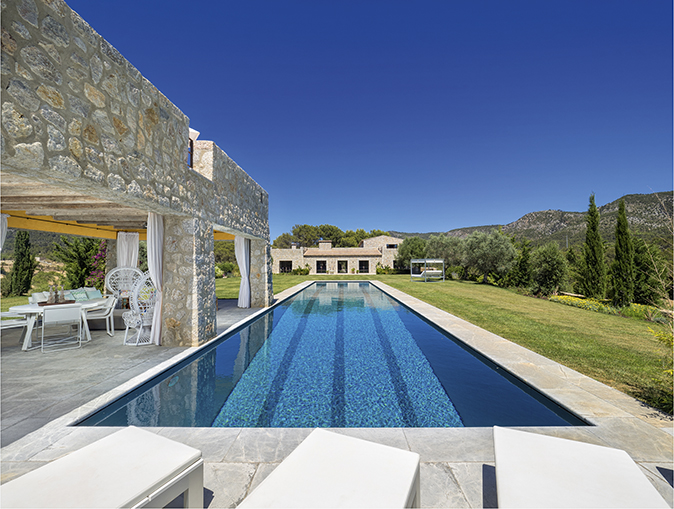
‘For anyone buying a villa in the Cap Vermell estate, the focus is all about service. As well as 24-hour security, owners have the option to add on elements such as cleaning, gardening, cooking and babysitting—anything can be arranged,’ explains Mr Fischer. ‘They’ll be the ideal lock-up-and-leave property, without any maintenance.’ Only the Son Vida estate outside Palma provides a similar set up, but without the same level of service.
Off the estate, buyers at this end of the island have, thus far, been mainly German, with a smattering of Scandinavians and the odd Briton—those who haven’t found what they were looking for in Pollensa, for example—but it’s here that the great and the good from mainland Spain tend to come—especially to the Costa de los Pinos. However, ‘they come to escape,’ states Mr Fischer. ‘It’s not about being showy.’
Under the blistering afternoon sun, the market square of Artà is deserted and the houses’ faded grey, blue and green shutters are firmly closed to maintain the cool stone interiors. However, behind these unprepossessing façades lie some majestic properties, including Can Tomàs, a spectacular 1,200sq m, 14-bedroom house that enjoys an unusual dual aspect.
It’s at once part of the town, with the shops and restaurants just a few minutes’ walk away, but also opens out into the hills and countryside beyond, thanks to a substantial garden at the back. With a guide price of €4.9 million, the house, which has been refurbished but could do with further work, will be a project for the new owner. ‘It’s expensive for this area, but there are only three or four houses like this in the entire of Artà,’ explains Mr Fischer.
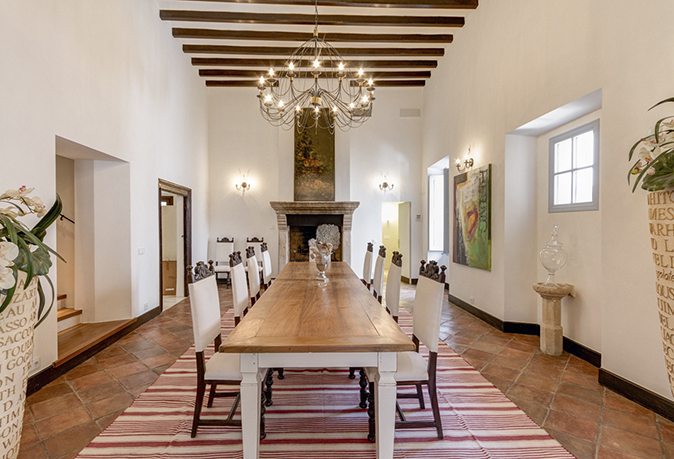
A five-minute drive down the road takes you to the pretty bay of Canyamel, which, unlike so many on the island, hasn’t been blighted by mediocre architecture. Only one block hails from the tourism boom days that overtook Mallorca in the 1980s, otherwise, the crystal-clear water glistens invitingly. Here, there is a small marina and yachting scene, but you won’t spot Ferraris and Porsches— and prices reflect that. ‘Prices are about 30% less than the prime areas of the south-west; perhaps 10% or 15% less than Pollensa.’
Another factor that will help draw attention to this part of the island is the new American International School (AIS) in Manacor (00 34 971 17 16 76; www.aismallorca.com). Currently, any family wishing to base themselves permanently on the island would need to travel down to the clutch of international schools in and around Palma or face the challenge of the local schools (more challenging than you might think, with many lessons taught in Catalan rather than Castilian Spanish). The new school falls under the auspices of the long-established British school The Academy International School, in Marratxí, which locals say bodes will for its future.
Rafa Nadal, Mallorca’s home-grown tennis star, lives in this part of the island and has his own tennis academy (www.rafanadalacademy.com), where, through links with the AIS, 12- to 18-year-olds can come for intensive, full-boarding summer camps or for tuition throughout the year—giving families one more reason to visit the island in winter.
-
 Vertigo at Victoria Falls, a sunset surrounded by lions and swimming in the Nile: A journey from Cape Town to Cairo
Vertigo at Victoria Falls, a sunset surrounded by lions and swimming in the Nile: A journey from Cape Town to CairoWhy do we travel and who inspires us to do so? Chris Wallace went in search of answers on his own epic journey the length of Africa.
By Christopher Wallace Published
-
 A gorgeous Scottish cottage with contemporary interiors on the bonny banks of the River Tay
A gorgeous Scottish cottage with contemporary interiors on the bonny banks of the River TayCarnliath on the edge of Strathtay is a delightful family home set in sensational scenery.
By James Fisher Published
